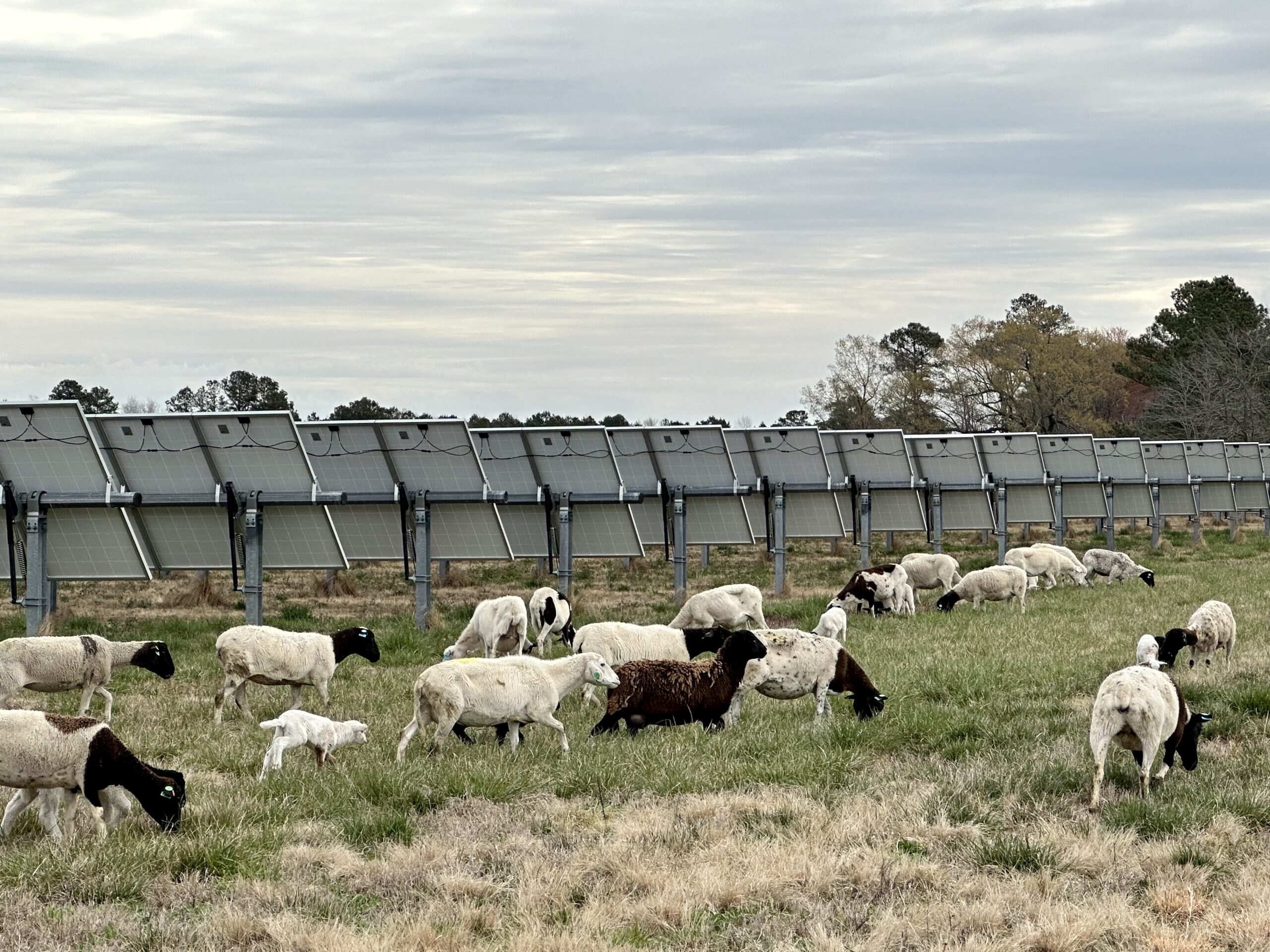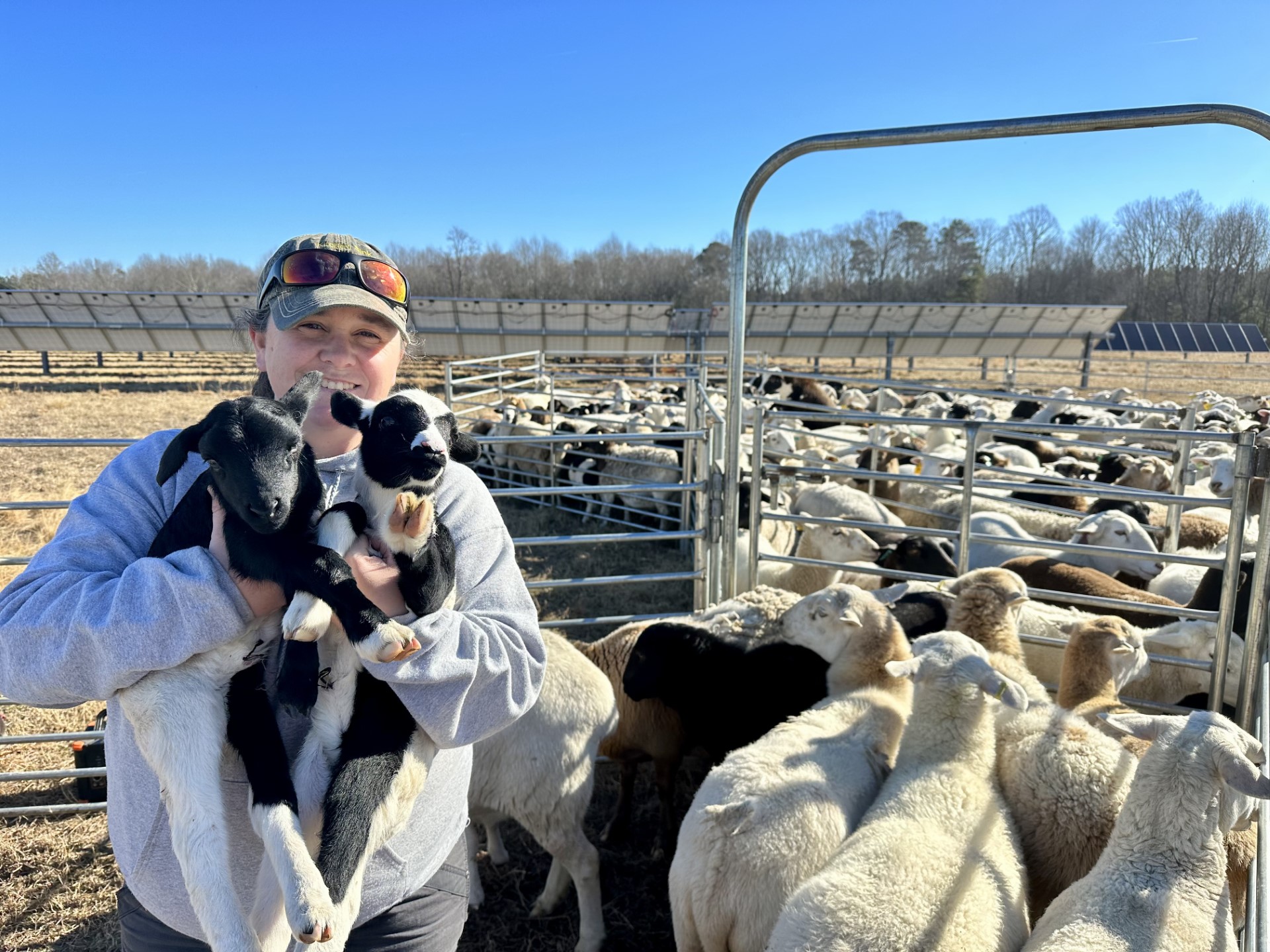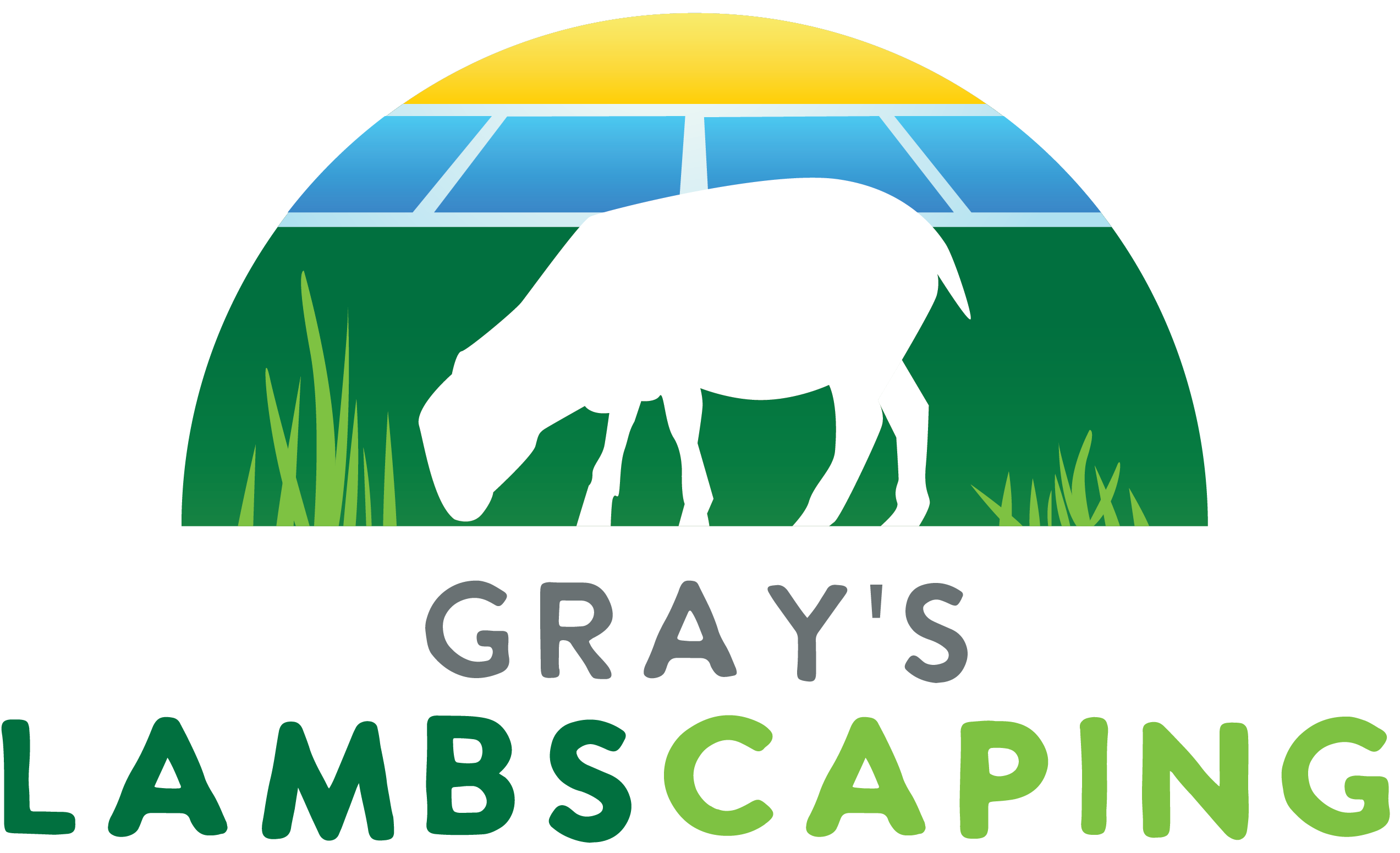Beyond the Bottom Line: Comparing Solar Grazing and Mowing
By: Jess Gray · May 4, 2024 · 8 min
When managing high-cost solar sites, the adage “you get what you pay for” truly resonates, especially in vegetation management. Traditional mowing may appear cost-effective at first blush, but solar grazing provides immense value long-term – ranging from financial gains to ecological benefits.
Environmental Benefits of Solar Grazing Vs. Mowing
- Biodiversity: Solar grazing transforms solar farms into vibrant ecosystems. By allowing forbs and grasses to flourish and rotating pastures, we encourage a habitat conducive to various species, from dung beetles and worms to spiders and grasshoppers. This initiation at the micro level fosters a broader return of wildlife, revitalizing the land.
- Soil Health: Through targeted grazing, sheep contribute directly to soil fertility. They reintroduce essential minerals and aid in the establishment of a robust seed bed. This enhances the soil’s ability to support diverse plant life, supporting the revived animal population.
- Carbon Sequestration: Well-managed grazing practices enhance the grassland’s ability to capture carbon dioxide from the atmosphere, store carbon in the soil, and contribute to efforts to mitigate climate change.
- Stormwater Mitigation: Grazing encourages plants to develop extensive root systems, which improves soil structure and promotes water infiltration. This natural filtration system reduces stormwater runoff, which is crucial in maintaining the cleanliness and efficiency of solar panels.
- Vigorous Plant Growth: Sheep selectively graze on certain plants while ignoring others, which can help control invasive species and encourage the growth of desired vegetation. Over time, this selective grazing reduces the need for mechanical intervention, aligning more closely with natural processes.
Operational Advantages of Solar Grazing Vs. Mowing
- Increased Animal Performance: Sheep quickly adapt to their environment, particularly when born on a solar site. This adaptation reduces stress and increases their efficiency as grazers, directly benefiting vegetation management on solar farms.
- Reduced Equipment Damage: Unlike mechanical mowers, sheep pose no risk to solar panels. They do not kick up rocks, fling dirt, or pose a fire hazard. Their gentle grazing ensures the infrastructure remains unscathed, even in adverse weather conditions.
- Cost Efficiency: The pricing model for solar grazing is straightforward—fees are charged per acre per year, with no hidden costs. In contrast, mowing costs can accumulate quickly, with charges applied per acre, per mow, plus additional fees for careful trimming work around and under arrays.
Economic Benefits of Solar Grazing
Solar grazing contributes to environmental sustainability and offers compelling economic advantages over traditional mowing methods. These benefits, encompassing direct cost savings and indirect financial gains, make solar grazing an economically prudent choice for solar farm vegetation management.
Direct Cost Savings of Solar Grazing
Reduced Maintenance Expenses
By replacing mechanical mowers with sheep, the costs associated with fuel, equipment maintenance, and labor are significantly reduced. Since sheep graze continuously, they keep the vegetation at an optimal height, decreasing the frequency and need for costly mechanical interventions.
Lower Labor Costs
Solar grazing requires fewer human resources than labor-intensive needs of operating and maintaining mowing equipment. The reduction in manpower for routine mowing operations translates directly into cost savings.
No Additional Equipment Costs
Unlike mowing, which may require various types of equipment depending on the terrain and the growth rate of vegetation, solar grazing utilizes sheep’s natural behavior, eliminating the need for investment in multiple mowing machines and tools.
Indirect Financial Benefits of Solar Grazing
Extended Equipment Lifespan
By limiting the use of heavy machinery on the solar farm, we minimize the risk of damage to solar panels and related infrastructure from rocks and debris. This not only saves on immediate repair costs but also extends the lifespan of the solar installation, enhancing its financial viability over time.
Predictable Pricing Model
Solar grazing offers a straightforward costing model—typically a flat fee per acre per year—making budgeting more predictable and manageable. In contrast, the cost of mowing can vary widely depending on fuel prices, equipment wear and tear, and labor rates.
Enhanced Land Value
The improvements in soil quality and biodiversity resulting from solar grazing can increase the overall value of the land. Healthier soil supports robust plant growth and contributes to a more attractive and ecologically vibrant landscape, a valuable asset.
Looking Long-term: The Financial Benefits of Grazing
Adopting solar grazing is not just about cutting costs in the short term; it’s about investing in a sustainable model that promises more significant financial returns over the lifespan of a solar farm. Solar farms can achieve better financial outcomes with reduced operational costs and less mechanical wear and tear, proving solar grazing is a smart economic strategy in the renewable energy sector.
Our Commitment to Risk Mitigation
At Gray’s LAMBscaping, we under rigorous safety and health protocols at all of the solar sites we manage. All personnel involved in grazing management are equipped with appropriate personal protective equipment (PPE), trained in OSHA standards, and certified in CPR/AED and First Aid to ensure both human and animal safety. We also retain an on-call 24/7, available via telehealth, to address any animal health issues promptly, ensuring the welfare of the grazing flock.

Solar grazing with supportive mowing and weed eating offers a comprehensive land management approach and an economically sound alternative to mowing alone.
About Jess
Jess Gray is the CEO of Gray’s LAMBscaping, LLC, overseeing the company’s financial management, policy development, logistics, and reporting. As a 2023 Nuffield International Agricultural Scholar, Gray has represented her company in over half a dozen countries, focusing her research on integrating solar energy with livestock grazing.



